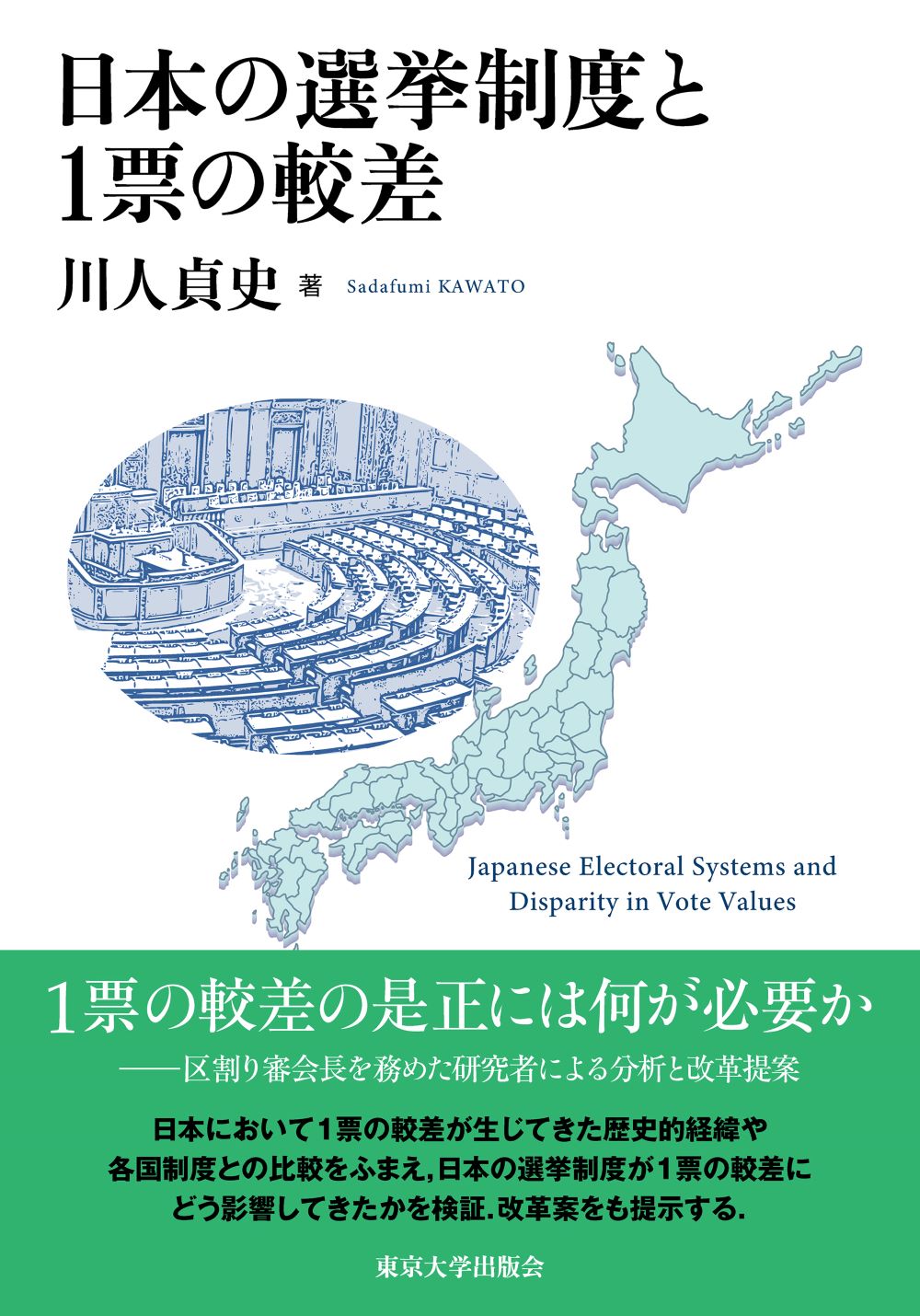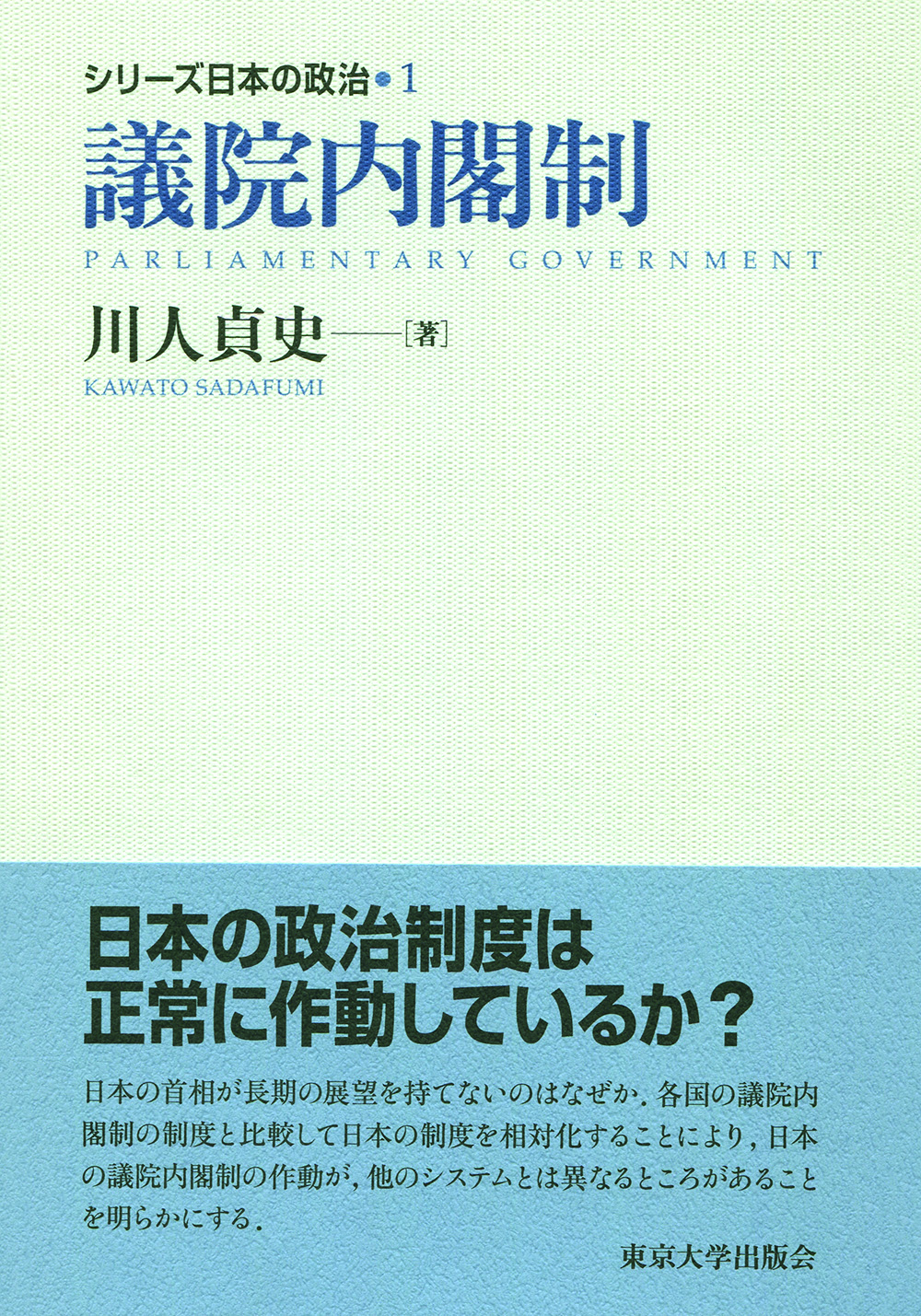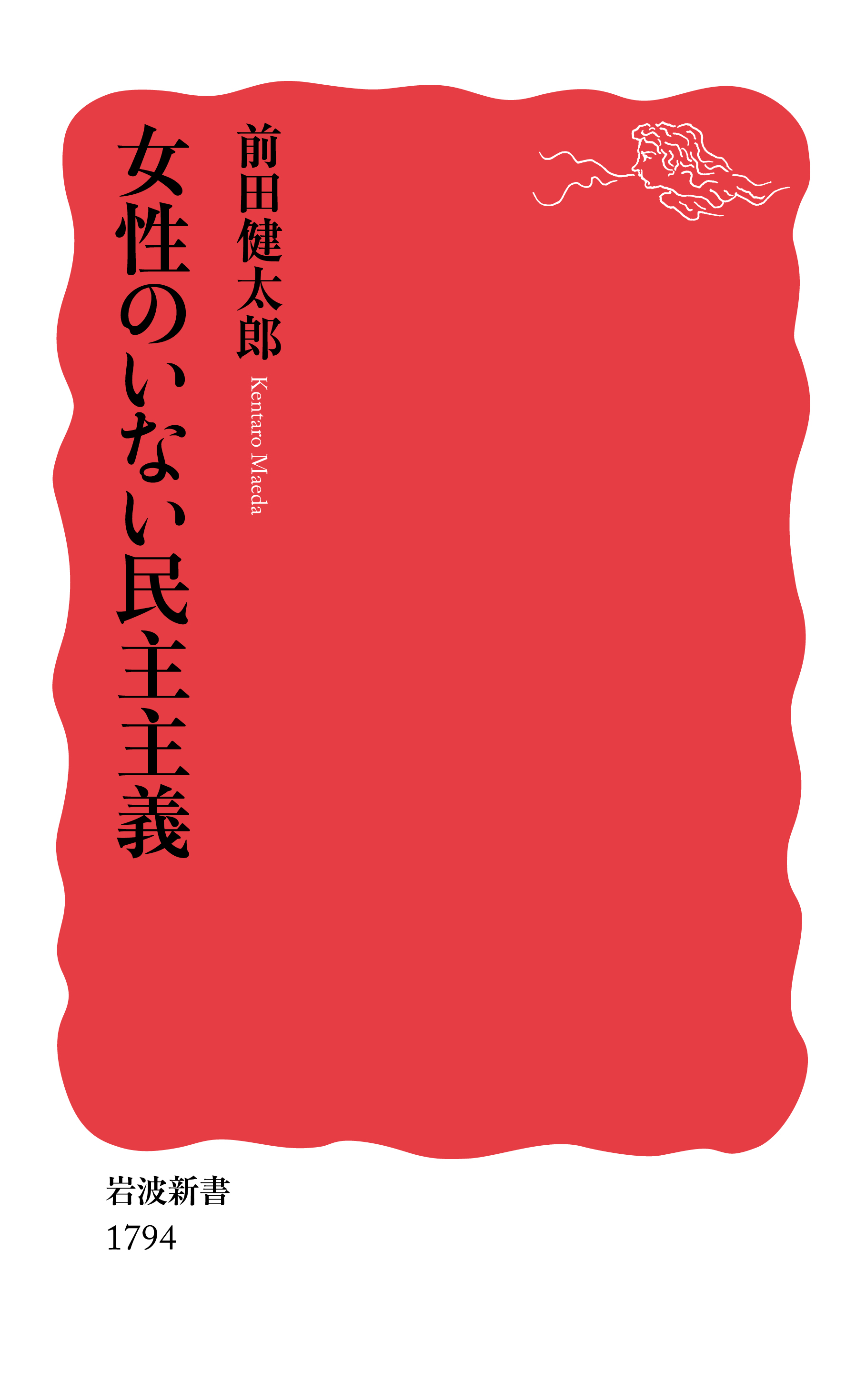
Title
Nihon no Senkyo Seido to 1 pyo no Kakusa (Japanese Electoral Systems and Disparity in Vote Values)
Size
296 pages, A5 format
Language
Japanese
Released
September 27, 2024
ISBN
978-4-13-030193-0
Published by
The University of Tokyo Press
Book Info
See Book Availability at Library
Japanese Page
Democracy is an ideal political system that is completely or almost completely responsive to the preferences of all its citizens, considered as political equals (Dahl 1971). For a modern large-scale democratic political system to approximate this ideal, its electoral system must ensure that all full citizens have equal opportunities to participate and have equal influence over electoral outcomes.
In the election of members of the House of Representatives, legislative seats are apportioned to jurisdictions— such as states or prefectures—in proportion to their population. Then, districts are drawn within these jurisdictions. One of the best approaches to creating legislative districts is: (1) to use a true proportional representation formula for apportionment; and (2) to design legislative districts with, as nearly as practicable, equal populations to ensure equal representation within each jurisdiction.
The United States, the United Kingdom, and Canada adopt single-member constituency systems for lower house elections. Each country employs the above approach while considering local circumstances. Thus, it can be said that this has become the global standard. In contrast, Japan has not followed this method—either in the single-member constituency system established for the first House of Representatives in 1889, or in the current single-member constituency–proportional representation system introduced in 1994. As a result, Japan falls short of fully implementing “one person, one vote” principle.
Under the 1994 system, one seat is allocated to each prefecture, and the remaining seats are apportioned proportionally among prefectures. This method has overrepresented less populous prefectures relative to more populous ones. Furthermore, the redistricting criterion specifies that the nationwide ratio of the largest to the smallest constituency population should not substantially exceed 2:1. Consequently, the vote of the most overrepresented constituent is worth more than twice that of the most underrepresented one.
In its 2011 decision, the Supreme Court ruled that this apportionment method was a major factor contributing to constituency population disparity and deemed it unconstitutional. In response, the Diet enacted a revised law mandating the use of the Adams method for reapportionment and setting a nationwide constituency population ratio ceiling of 2:1. However, even minor population shifts have since resulted in disparities exceeding this threshold.
This book proposes reforms to Japan's constituency redistricting method. Although the apportionment of seats to prefectures using the Adams method has resulted in a population-per-seat ratio of less than 2:1 at the prefectural level, the current redistricting criterion—which considers only the nationwide constituency population ratio of less than 2:1—would still allow unacceptably wide disparities among constituencies.
Therefore:
1. The current redistricting criterion should be replaced with a new standard requiring that each constituency's population fall within ±10% of the average population per seat in its prefecture;
2. As this standard is likely to keep the nationwide constituency population ratio below 2:1, mid-decade redistricting will no longer be necessary; and
3. Constituency boundaries can therefore remain unchanged for the full 10-year period.
Reference
Dahl, Robert A. 1971. Polyarchy: Participation and Opposition. New Haven and London: Yale University Press.
(Written by KAWATO Sadafumi, Professor Emeritus, Graduate Schools for Law and Politics / 2025)



 Find a book
Find a book


 eBook
eBook

